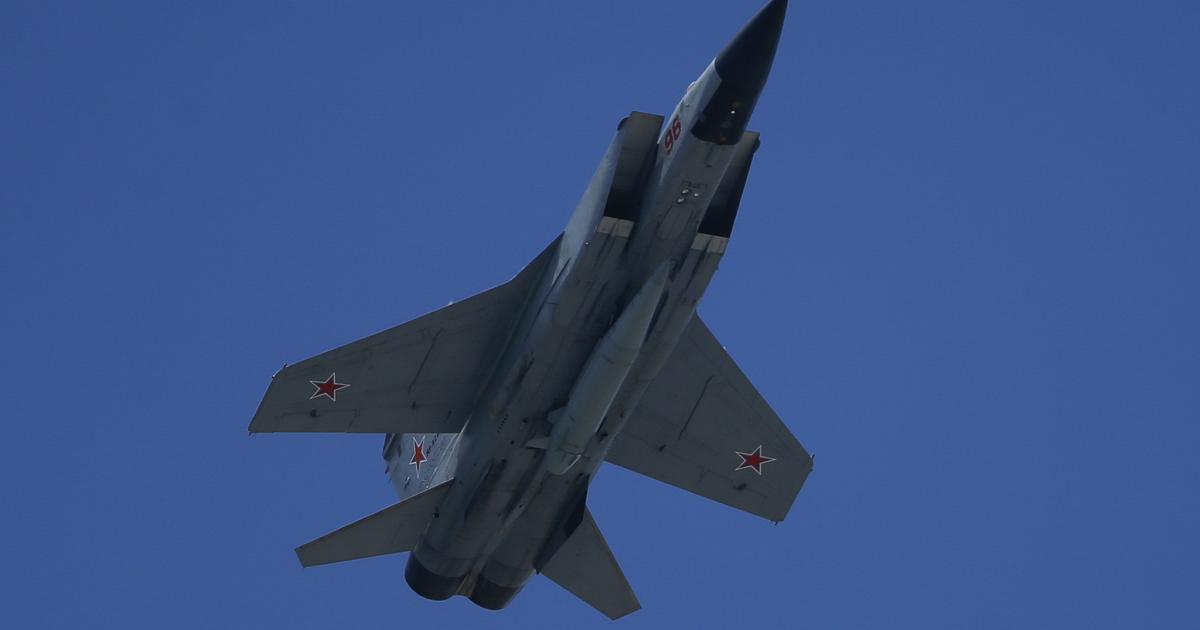The Ukrainian Air Force yesterday claimed to have intercepted all six Kinzhal ultrasonic missiles, launched by Russia overnight. The commander-in-chief of the Ukrainian armed forces Valerii Zaluzhnyi, in a post on Telegram, said that "around 3.30 the Russians attacked Ukraine from the north, south and east", launching a total of 18 missiles, including, the general specified on Telegram "6 Kinzhal hypersonic missiles fired from six MiG-31K aircraft, 9 Kalibr cruise missiles launched from ships in the Black Sea and 3 S-400 Iskander-M missiles.
"The enemy - added Zaluzhnyi - also attacked with Shahed-136/131 drones and conducted aerial reconnaissance with three other drones. All of them have been destroyed."
The news of the downing of Russian hypersonic missiles was later denied by Moscow. Russian Defense Ministry spokesman Igor Konashenkov said that "all assigned targets were hit."
The result achieved by the Ukrainian air defenses, if confirmed, would still be considered exceptional even in a hypothetical comparison between the Western military technology in the hands of the Ukrainians and the more sophisticated equipment produced by the Russian military industry because the six ballistic missiles would have been shot down by the American Patriot anti-missile systems, even if at the moment there are no official confirmations.
Ukrainian Air Force spokesman Yuri Ignat said all six Kinzhal ballistic missiles shot down overnight were flying toward the capital Kiev, Zn.ua and Ukrinform reported. "The work was a huge success. Kiev remains the epicenter, the capital has always been a priority for Russians, and now it is protected by serious means," Ignat said.
Ukrainian forces have so far shot down 7 Russian Kinzhal hypersonic missiles out of a total of 80 in Moscow's arsenal, Ukrainian Defense Minister Alexei Reznikov said in a tweet. "Another incredible success for the Ukrainian Air Force!" exulted the minister.
The Russian Kh-47M2 Kinzhal hypersonic dual ballistic missile made its combat debut on March 19, launched against an underground ammunition depot in Delyatyn, Ivano-Frankovsk region. A second direct launch over Kiev dates back to early May, and this would have been the first to be shot down.
The Kinzhal - "dagger" in Cyrillic - was designed to be able to reach high speeds, 12 thousand kilometers per hour in close proximity to the target, avoiding the opponent's anti-aircraft. It has a range of 2 thousand kilometers, if launched by a Mig (3 thousand by a Tu-22M3), and follows an unpredictable trajectory.
About nine meters long by one meter in diameter, it has a launch weight of about 4,300 kilos and can be armed with different types of warheads, from conventional to thermonuclear and thermobaric ones.
Vladimir Putin called it an "ideal weapon" when, in March 2018, he spoke about it for the first time in public. It is part of the new group of hypersonic systems developed in Russia (in addition to the Avangard intercontinental missile and the Tskinkal cruise missile). Hypersonic technology in that country is now considered advanced.
Russia, for its part, claimed today that it had managed to destroy a Patriot system using a Kinzhal, a circumstance at least partially denied by a US official who told CNN that "it was probably damaged but not destroyed".

